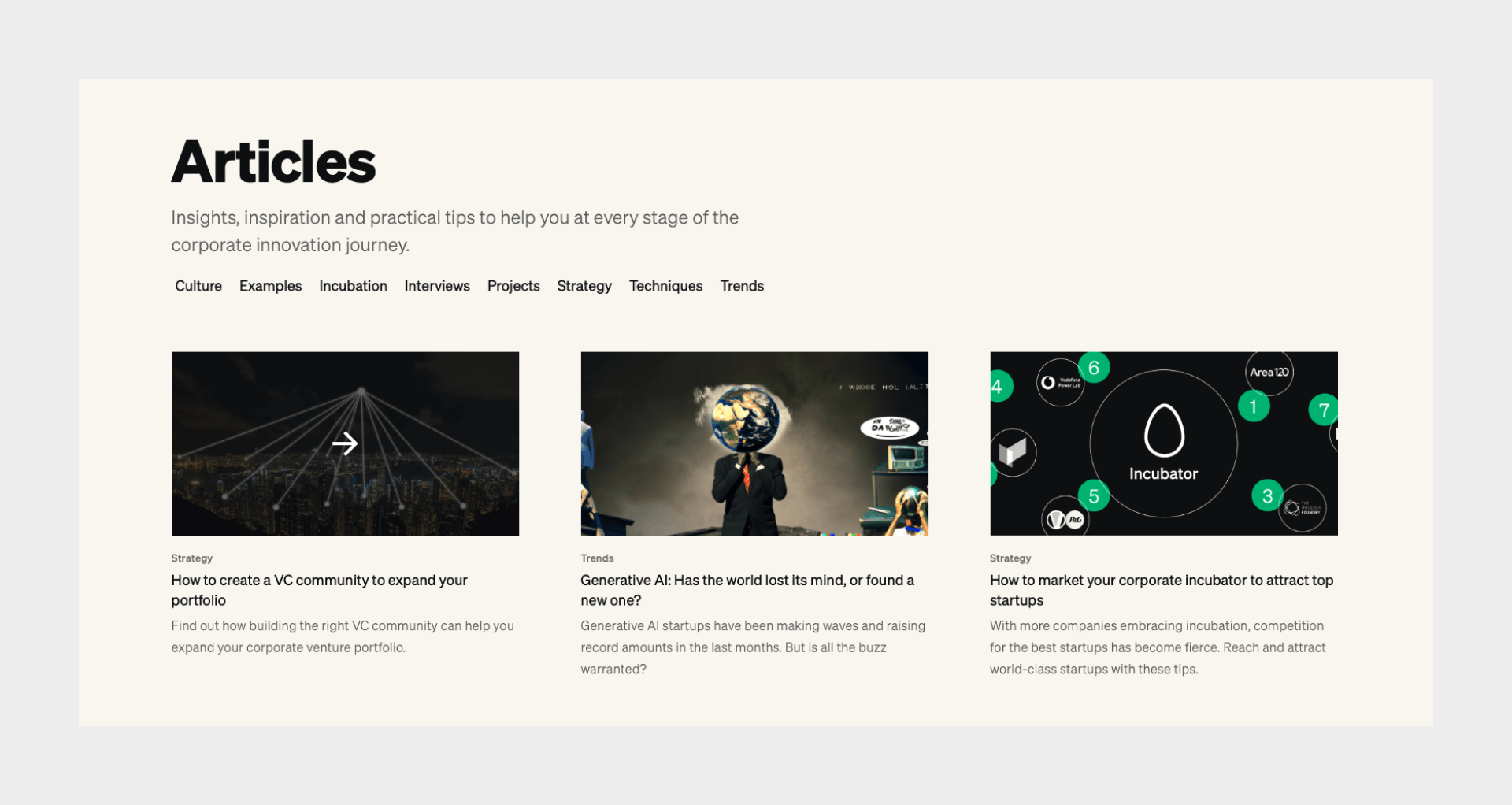Key takeaways
Lead generation is dead.
While that might not be entirely true, the sales intelligence platform Cognismn reduced its lead generation budget by 90% in 2021. And with good reason.
The company grew from 2M to 6M in annual revenue in just six months by delivering value upfront instead of using a traditional lead generation strategy that brought them low- or no-intent leads. Why is that?
The customer journey has gone from straightforward to mysterious because most interactions happen in the dark funnel. So what exactly is the dark funnel?
The dark funnel is made up of all the untrackable intent data and research before a person converts to a potential customer. As marketers, we have come to rely on tracking tools that create the illusion of insight but don’t tell the whole story.
In this article, you will learn more about dark funnel marketing and how to tap into that mysterious yet powerful part of the buyer journey.
B2B saturation significantly impacts ad costs, and B2B advertising costs are increasing
There are tons of B2B products on the market, and the supply is only growing. Global estimates show over 26 000 fintech startups alone.
In the last couple of years, advertising costs have risen significantly.
The cost per lead on typical platforms such as LinkedIn, Twitter, Google, or Facebook is becoming more expensive.
How did lead engagement work?
- You gave 20% value upfront by offering people a downloadable ebook
- Then, you followed up with emails, sales calls, and messages, hoping to get a small percentage as a customer.

The problem with the old way of doing things is:
- B2B costs are significantly rising because the competition is increasing.
- Many companies are bidding for the same ad space.
- 70% of all research done by a potential customer happens before they have a sales interaction.
We believe the new role of marketers, moving forward in 2023, is to educate and inform people to a level where they are ready to buy.
What drives the dark funnel is demand. Demand for information. Demand for knowledge. Demand for unique and exciting content. This strategy is called demand generation.
So, how do we do that exactly? Before we get into that, we need to understand the importance of data and dark funnels.
Where does data stand in dark funnels?
We learn that we need to track as many data points as possible, right? As we all know, data is becoming harder to track. It makes getting a complete picture of the customer journey more challenging.
Privacy updates like Apple’s “Ask App Not to Track” hide consumer data, making capturing essential data and information increasingly difficult. Besides that, we are slowly witnessing the death of third-party cookies.
But what if there is a new way to do marketing? What if there is a new way to look at these metrics? Maybe we should focus less on measuring all these metrics.
Dark funnels - They’re changing the way we do marketing
Before the internet, before Google, people did not have a way to do a lot of research themselves. They were looking for guidance and information from a professional or salesperson.
The most significant part of a customer journey was ‘visible’ because the customer had a professional or expert from the beginning. But this is drastically different today. According to Gartner, buyers these days typically spend only 17% of their time meeting with potential suppliers when considering making a purchase.
People have engaged in word-of-mouth since the beginning of time. Even texting, social media, and instant messaging have all been around for years in places where marketers can’t track them. Referrals from friends, colleagues, and family significantly impact buying decisions. According to ThinkImpact, referrals create 65% of new business opportunities.
Let’s look at an example of a buyer’s journey through the dark funnel:
- Consumer finds a shared post on LinkedIn about an interesting B2B product.
- Consumer takes no action.
- Consumer talks about the B2B product with one of her colleagues via Zoom.
- Consumer shares the LinkedIn post in a communication channel.
- Consumer reads a subreddit about the product.
- Consumer sees an advertisement of the company and clicks on it.
- Consumer seeks out websites and socials but doesn’t follow.
- Consumer has a friend who makes a recommendation about the product.
- Consumer’s manager sets up a demo call after the recommendation.
- Consumer’s manager books a 12-month contract.

How to nurture dark funnels with demand generation
How much time have sales teams already spent on bad leads?
The goal of marketers is to increase revenue. To increase revenue, we need to get more leads. Eventually, they find ways to push low-quality and non-converting leads in the funnel.
They don’t bring in any revenue and, as a result, end up repeatedly not achieving targets. For years the focus has been on gathering as many leads as possible with little care for the quality of leads.
As a result, sales teams wasted time converting leads that weren’t ready to buy. This approach has improved by focussing more on high-quality leads by educating them beforehand and ensuring they’re prepared to come to you, not the other way around.
By creating content that can be both educational and valuable to your audience, you can leverage these dark funnels. When prospects eventually weigh who to choose for their purchase, the company that delivers value and knowledge upfront will most likely win.
Demand generation: your new blue ocean strategy
There is only so much demand and awareness out there – some sources say that only 5% of your total addressable market (TAM) is ready to buy now.
Interestingly, most companies aim towards that 5% and put most of their marketing budget on that small audience. Most organisations want short-term profits through strategies like lead generation - yet they don’t think about the long-term results.
That strategy is becoming saturated, especially if you know that B2B ad costs are rapidly increasing and everyone is focussing on that same small 5% audience.
Why not focus more on the 95% of that untapped potential? And leverage dark funnels? Sooner or later, 95% will start thinking about buying a product in your area.
As explained by Gaetano DiNardi, VP of Growth at Auro, during an episode of B2B growth podcasts:
“What do people like me do late at night? I spend time on social media sites like Instagram.
Companies like Clearbit have found ways to advertise to people like me late at night. Why am I mentioning Clearbit? Because their ads are memorable.
[They’re] an example of marketing to the 90% of people who are not thinking about them and who don’t want to buy Clearbit right now.
The day will come when I need some kind of data enrichment solution, and I’m probably going to go to Clearbit.”
How to measure your results with dark funnels (the right way)
For the past ten years or even longer, marketers have been trained to look for direct attribution to prove that something is or is not working. But as we all know, data is becoming harder to track with all the recent privacy updates. And besides that, most conversations and interactions happen in places that are impossible to track.
Instead, we must look at correlations and the audience to determine the best results.
Your number one metric for any marketing initiative should be revenue. Demand generation is no exception. Here’s what Evan Hughes, one of the pioneers in dark funnels and demand generation, had to say:

Aside from this, you don’t want to rely solely on metrics and data - because you’ll only see a part of the bigger picture. Most of the research and interactions happen off your platform.
Focussing less on all the different metrics could be a blessing and free up more time to create better content.
So how can you do it? How do we focus less on metrics?
By talking to your customers, discovering their motivations, and understanding what happens before they get in touch with you. You want a bigger picture of their user journey and can only do that through customer research. So let’s dive into it.
Build a solid foundation of customer research
Before you get excited about creating content for your audience, hold on a second.
Content is the fuel we use to create demand for your brand and to generate genuine interest. But it’s important to know that besides using the knowledge in your team, you may also use the feedback and insights of your customers.
With the right content, we show our audience we understand their challenges, guide them, and assure them we can help them.
How to interview people
Schedule short interviews with people from your sales team, customers and prospects.
Asking the right questions to identify your audience's challenges and motivations. It’s essential to have the right ingredients to drive demand.
Open-ended questions you can ask:
- What got you interested in our brand?
- What problem(s) were you trying to solve when you bought our product or service?
- Why did you choose us over competitors?
- What kinds of content do you share most often?
- What is something you’d like to see different?
Look for patterns in their responses and pinpoint themes to brainstorm content around.
At Bundl, we often question our clients to find their motives for buying and why they contacted us in the first place. All information gets stored in a transparent database.
Common mistakes in customer interviewing
Listening to sales only: Most purchase decisions happen before people start talking to salespeople off your platform. While it’s essential to work with sales and listen to their advice, you should also incorporate direct feedback and insights from your customers.
Taking notes during the interview: Don’t make the mistake of asking questions and taking notes at the same time. Some real knowledge nuggets come from active listening and asking follow-up questions. Do the interviewing with a colleague or use a recording tool such as Descript to transcribe your conversations.
High focus on your competition: Beating your competition happens by knowing your customers better than anyone else. You do that by talking to your clients, not by looking at your competitors all the time. One thing you can do is read the comments from competitors’ customers to gain valuable insights.
How to create the right content to tap into dark funnels?
Crafting the right content is the key to effective demand generation. It helps potential buyers understand your service, get them excited enough to share, and keep them coming back for more.
For example, we use customer feedback as a starting point to brainstorm different concepts and ideas. A tool we use for that is called Miro, and it’s great for online brainstorming and workshops.
Blog posts are one way to distribute your content and information. Here is an example of the Bundl blog post page:

You can repurpose articles into smaller bite-size pieces of content for LinkedIn posts, email newsletters and Twitter threads. Here is one of our posts:

Besides blogs and social media articles, we also provide free reports, canvases, and guides for our audiences.

How to distribute your content effectively
You need two key ingredients for demand generation:
- creating high-quality content
- distributing it to your audience correctly
With great content, it doesn’t matter if you’re not distributing it properly. With bad content, good distribution won’t make an impact. Here are some tips for distributing your content in the best way possible.
1. Redistribute content you already have
Let’s say you already have some good gated content or an ebook that brings in tons of downloads, a valuable piece of content people really show an interest in. It might be a good idea to leverage that and convert that content into videos, separate social posts, and more.
For example, Cognism had a great piece around cold calling. Instead of simply un-gating all materials and calling it “demand generation”, they created a video series of live broadcasts.
Their content distribution strategy looked like this:
- Repurpose videos into paid and organic content
- Repurpose audio into podcast episodes
- Create blog posts, including video snippets and access to full recordings
- Turn ebooks into interactive web pages with relevant video snippets, optimised for SEO and site conversion
2. Customise your content to match the platform you use
Learn to understand what type of content performs well on what channels. For example, with LinkedIn, people don’t want to watch 10-minute-long videos, or they don’t necessarily want to click through to your blog posts. They want a quick read of an interesting and engaging post on LinkedIn itself with information that is relevant to them.
As described by Cognism’s Global Head of Demand Generation, Liam Bartholomew:
“[Generating demand] is about getting into the mindset of creating content in all formats, best optimised for the social feed or openly available on your website—to be easily consumed, shared and interacted with.”
3. Make your content available to your entire audience
Make TOFU and BOFU content available to your entire potential audience. Don’t focus on creating funnels where you assume because someone downloaded an ebook - they are now ready to see a product infographic. No funnel is 100% linear, so you must promote both to everyone.
4. Don’t limit yourself to single-image posts and ads
Use video, carousel ads and posts when possible. Classic lead generation strategies will make you think these aren’t effective because you “don’t want to get people to take more than one action at a time”. In reality, in-feed consumption is far superior to static single-image ads.
Is lead generation completely dead?
Demand generation is becoming increasingly important. That is an undeniable truth. But that doesn’t mean you must abandon all your current lead generation strategies and sources. If they work, why not utilise them?
Think about your short-term results while also focussing on your long-term results to stay future-proof with your brand.
“We initially continued to run our existing lead gen strategy until our DG machine was powerful enough to take over, and we’d recommend doing the same.
Lead gen provided the short-term results we needed for revenue while we worked on a long-term demand gen model.“
What’s in it for you?
Most companies are still in the mindset of acquiring as many leads as possible. The dark funnel and demand generation dramatically opens you up to better results.
It’s a massive opportunity for your company and career because you’re always learning and growing.
Bottom line: lead generation is not future-proof. Demand generation is.
Final thoughts
Know that most decisions of a potential client won’t happen within any of your platforms. The reality is that the highest-quality leads may find you through podcasts or Slack when a colleague screenshots your LinkedIn post, and countless other ways.
Only after that, towards the end of the customer journey, do people come to you for guidance.
Ironically, most companies put their budgets into the last steps of that funnel - by creating a lead generation campaign, for example.
What you want to do is provide as much value as possible beforehand. You want to help and educate your audience - and stay top of mind. Then, who are they most likely to pick when they're ready to buy? The company that has been spamming their mailbox and social media feed with ads for the last six months - or the company that genuinely helped and guided them?
Focus on educating your buyers at scale to streamline your sales process, resulting in higher conversion rates and more revenue.
________
Looking to take your venture to the next level? We can help you build a clear, measurable, automated scaleup strategy to boost profits at light speed.
16 strategies for disruptive innovation.
These 16 corporate venturing tools will help you innovate at startup speed.











.svg)
.webp)
